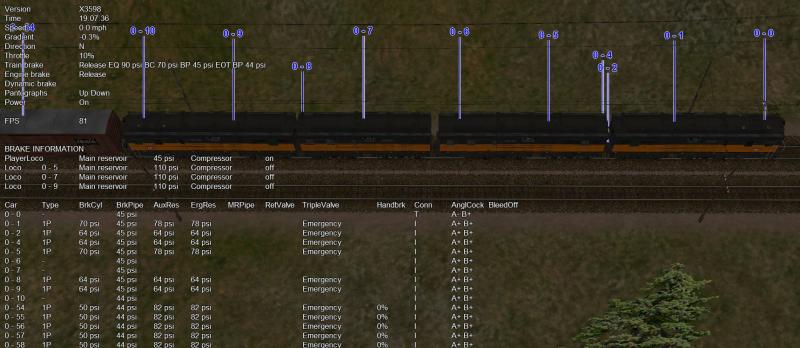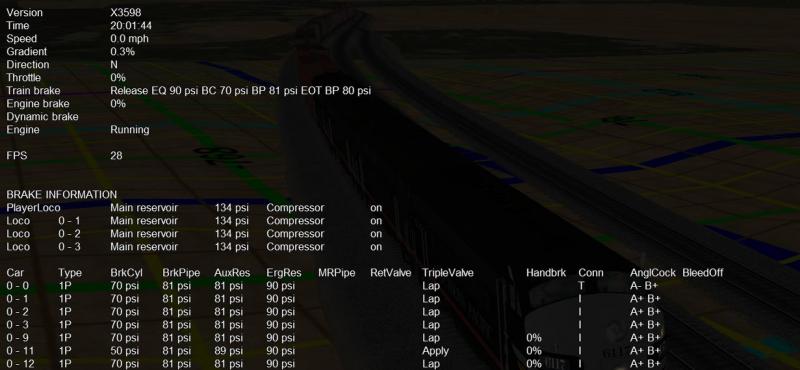 Coolhand101, on 27 August 2016 - 01:20 PM, said:
Coolhand101, on 27 August 2016 - 01:20 PM, said:
It has always been this way if using 'air_single_pipe' and the engine files are separated by a wag file
I think that this makes sense, as in a single pipe system, the train pipe provides the control signals for the brake operation, and mostly the main reservoirs of trailing locomotives would be isolated from the brake pipe. If they weren't isolated then they could give "funny" pressure readings behind the controlling locomotive due to them injecting air into the system.
Twin air pipe systems overcame this problem, as one pipe could be used for control purposes, and the other one to link all the reservoirs together to create a "super reservoir", without impacting on the train pipe pressures.
There are probably a number of scenarios in regards to multiple locomotive operation that could be considered:
i) Steam (especially older units) - only had single pipes, and the reservoirs on trailing locomotives would have been switched out
ii) Older diesels may not have been set up for multiple operation for brakes, and thus their reservoirs would have also been switched out.
iii) New Diesels would have been set up for multiple operation with multiple air hoses and electric control
iv) Modern Diesels appear to mostly use wireless and electronic control.
 Genma Saotome, on 27 August 2016 - 07:46 PM, said:
Genma Saotome, on 27 August 2016 - 07:46 PM, said:
It appears the software can locate the .eng units that lead the train (as seen in the first screen shot where the correct unit's are marked as MU'd). For several of those .engs there are two .wags between them. So what is the solution?
In normal operation, with the exception of option iv), above it would be unlikely for locomotives separated by wagons (WAG files) or tenders to operate in MU and have their reservoirs "connected". I agree that OR doesn't appear to cater for option iv) at the moment.
I think that the real question to ask is, should we use "dummy" WAG and ENG files to get around issues with articulated or multiple part locomotives? Is this solving the problem or making it more complex?




 Log In
Log In Register Now!
Register Now! Help
Help








